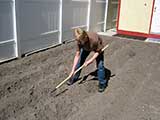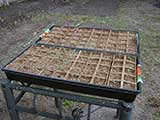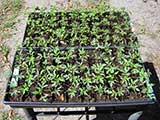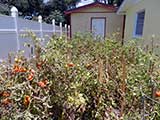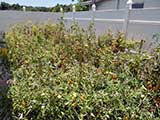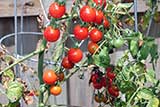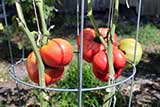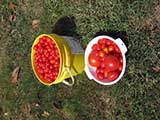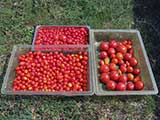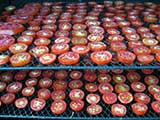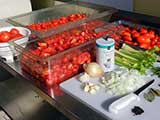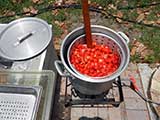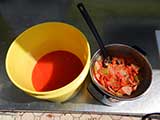Meats and Sausages
Preserving Tomatoes
Tomatoes can be preserved by drying, freezing or canning. The USDA uses acidity factor to distinguish fruits from vegetables. The critical point has been established as pH 4.6 – anything below is classified as high acid food, for example fruits (apple, orange) and all products with pH higher than 4.6 are defined as low acid foods, for example vegetables, meat, poultry and fish. High acid foods are canned at higher temperatures than low acid foods in order to kill Clostridium botulinum bacterial spores.
Tomato sits on the border line; some tomatoes contain enough acidity to be classified as fruits, others contain less acidity (pH above 4.6) and are considered vegetable. For safety reasons, the U.S. Department of Agriculture defines tomato as vegetable and commercial processing of tomatoes is subjected to stringent rules than fruits or jam products.
The tomato plant (Solanum lycopersicum) originated in Mexico and was brought to Europe by Spaniards, possibly by Christopher Columbus himself. From then, the tomato spread in Mediterranean countries, where it found favorable conditions to grow. Tomatoes are one of the most common garden fruits in the United States and have a reputation for outproducing the needs of the grower.
A little tomato garden can produce so much tomatoes that it will outgrow the needs of a typical family. Beefsteak, Roma, and cherry tomatoes were planted. Plants should be taken care on a daily basis and we have soon discovered that we did not have enough time. Three packets of seeds produced about 150 seedlings, there was no room to plant all of them.
Every few days we picked huge quantities of tomatoes which were continuously produced by the plants.
Tomatoes keep best unwashed at room temperature and out of direct sunlight. Keeping them in refrigerator can harm the flavor. Tomatoes that are not yet ripe will continue ripening if kept in a paper bag.


